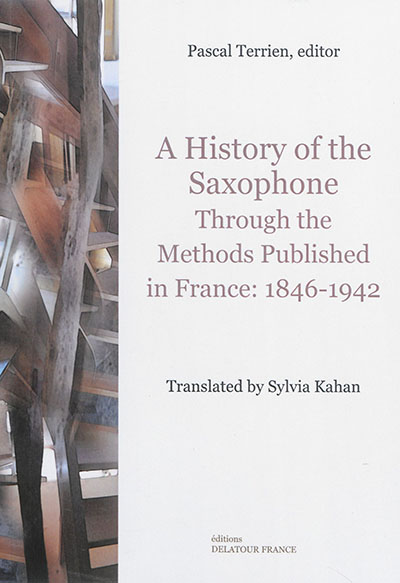en savoir plus

Permet à tous ses détenteurs d'obtenir 5% de réduction sur tous les livres lors du retrait en magasin (réduction non cumulable avec les réductions de type étudiant).
Offre également un certain nombre d'avantages auprès de nos partenaires.
Avec les favoris, retrouvez dans un espace les sélections effectuées au fur et à mesure de vos navigations dans le site.
Constituez pour votre usage personnel vos listes de livres en prévisions d'achats futurs et votre sélection d'articles, dossiers, événements, vidéos ou podcasts préférés ou à découvrir plus tard...
Il suffit simplement de cliquer sur "Ajout Favori" sur chaque page qui vous intéresse pour les retrouver ensuite dans votre espace personnel.
Requiert un compte Mollat
Requiert un compte Mollat
A history of the saxophone through the methods published in France : 1846-1942
en savoir plus
Résumé
Cet ouvrage s'intéresse aux contenus didactiques et pédagogiques des méthodes d'enseignement du saxophone en France depuis l'année où l'instrument est breveté, en 1846, jusqu'à celle où il est définitivement inscrit parmi les instruments enseignés au Conservatoire national de musique de Paris, en 1942. ©Electre 2025
Quatrième de couverture
A History of the Saxophone
Through the Methods Published in France : 1846-1942
This work traces the premises of saxophone instruction in France between 1846, the year the saxophone was patented, and 1942, when, thanks to Claude Delvincourt, the instrument was finally included among the instruments taught at the Conservatoire national de musique de Paris and Marcel Mule was appointed as the school's first professor of saxophone.
Taking into account the monumental changes and improvements to the instrument in the almost hundred years following its invention, the authors of these seven fascinating essays examine the saxophone methods published in France between 1846 and 1942 and make an in-depth study of their contents. What differences existed among methods written in 1846, the period 1880 to 1900, and 1940 ? Did pedagogical issues evolve along with improvements to the instrument over the course of these years ? In the realm of instrument classification, is there a historical development and relationship between the saxophone and the clarinet ? Did a repertoire for saxophone exist that has since been forgotten ? These and other questions linked to the epistemology and the pedagogy of the instrument are raised.
Why only methods published in France ? During this same period, other saxophone methods appeared throughout Europe and other parts of the world. The authors, however, wanted to limit themselves to examining the philosophical and pedagogical thinking that formed the underpinnings of the « French saxophone school » ; the French methods, emanating mostly from Paris, sufficed for the task. The authors explore not only their pedagogical contents, but also their importance for understanding of the history, origins, and evolution of the saxophone during its first hundred years of existence.
This collective work is one of the first, if not the first, to delve into this subject. In these seven essays, the saxophone is presented in myriad historical and cultural contexts : as a manifestation of exoticism in the 19th century, as a presence in military and popular-music bands, and as a crucial sonic force when jazz exploded onto the French music scene in the 1920s.
The study stops at 1942, the moment when the instrument acquired true academic statuts through its inclusion among the instruments taught at the Conservatoire de Paris. The different approaches taken by the authors will inform saxophonists about the history of their instrument, and, more broadly, will give teach instructors of the instrument new insights into the evolution of saxophone pedagogy.
Fiche Technique
Paru le : 21/09/2015
Thématique : Histoire de la musique, Essais Pratique instrumentale
Auteur(s) : Non précisé.
Éditeur(s) :
Ed. Delatour France
Collection(s) : Non précisé.
Contributeur(s) : Directeur de publication : Pascal Terrien - Traducteur : Sylvia Kahan - Préfacier : Bruno Mantovani - Préfacier : Serge Cyferstein
Série(s) : Non précisé.
ISBN : 978-2-7521-0262-1
EAN13 : 9782752102621
Reliure : Broché
Pages : 273
Hauteur: 25.0 cm / Largeur 18.0 cm
Poids: 505 g

